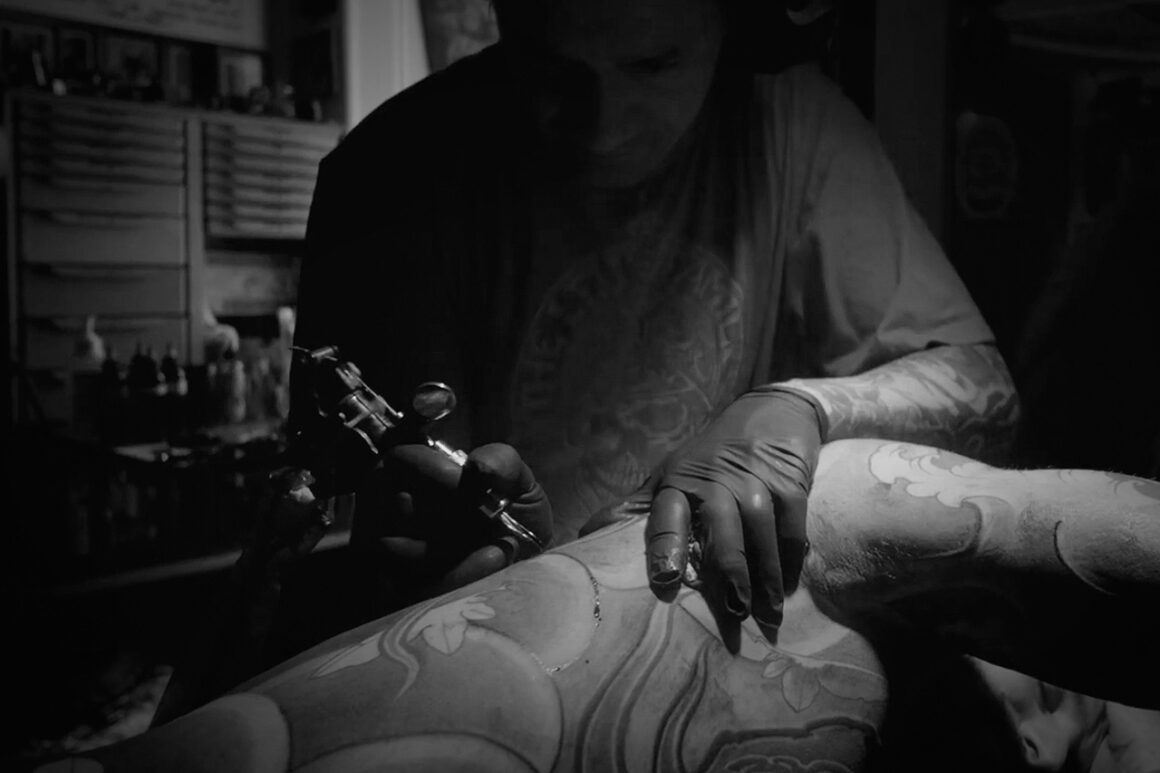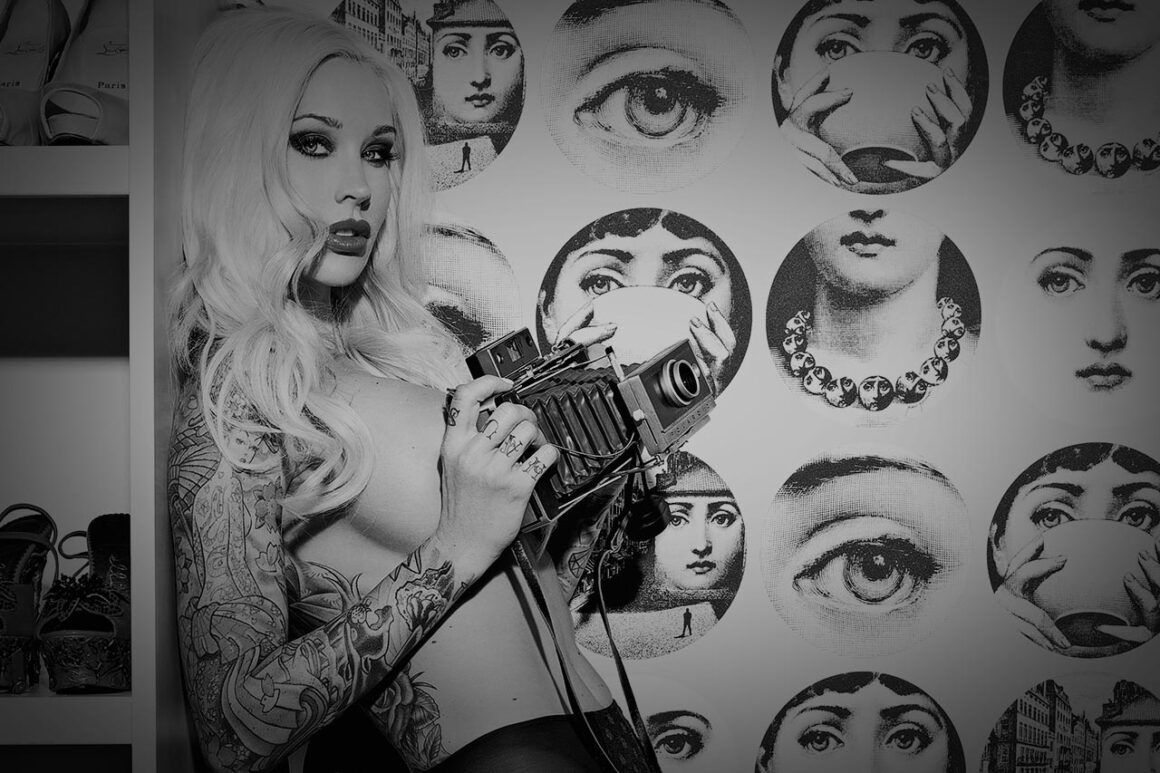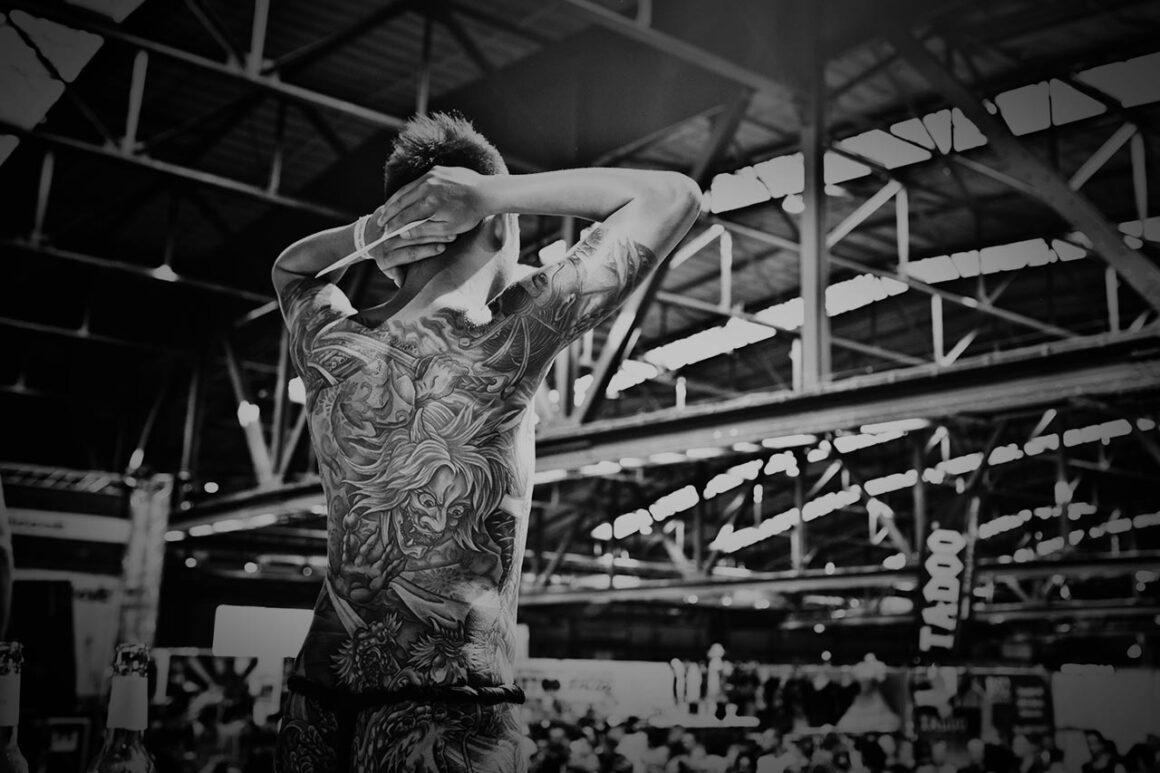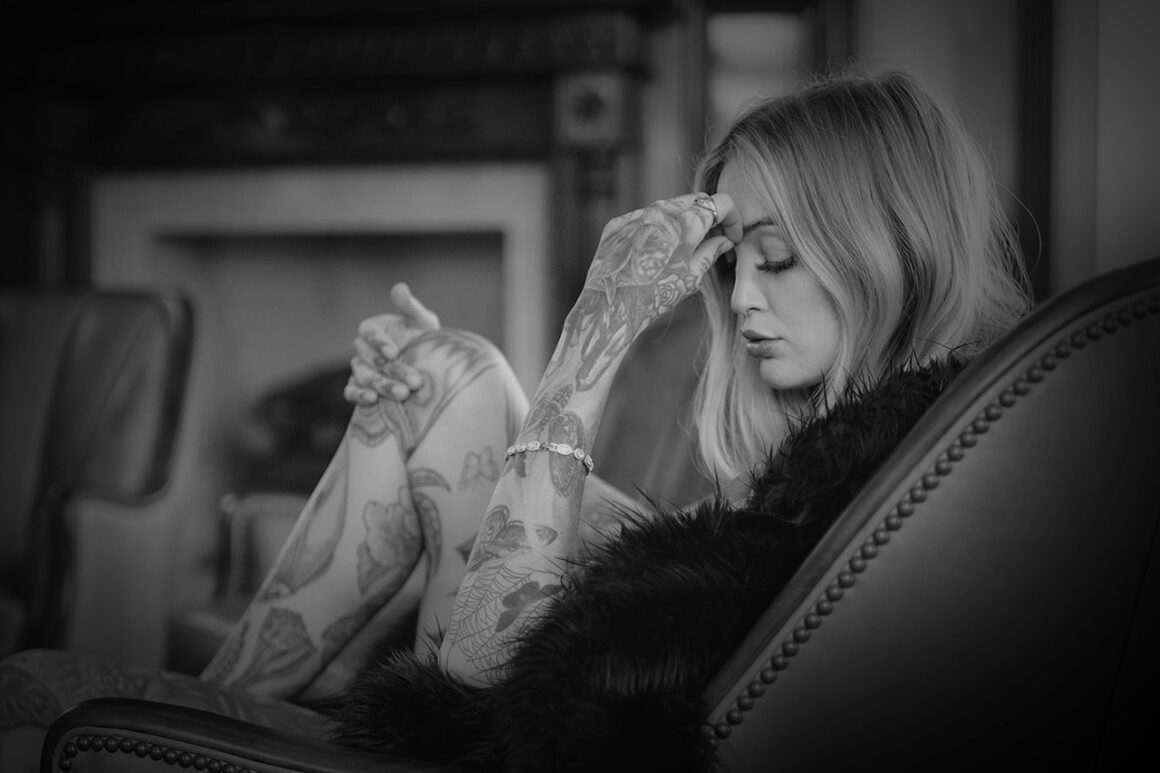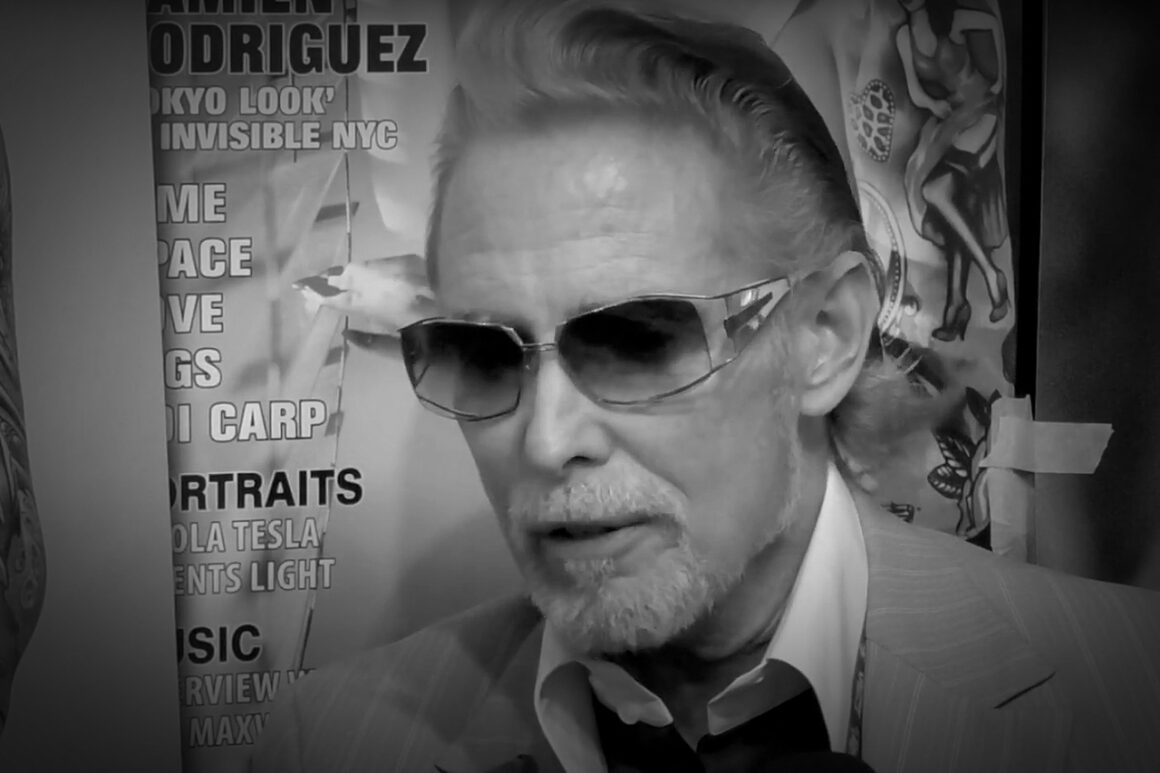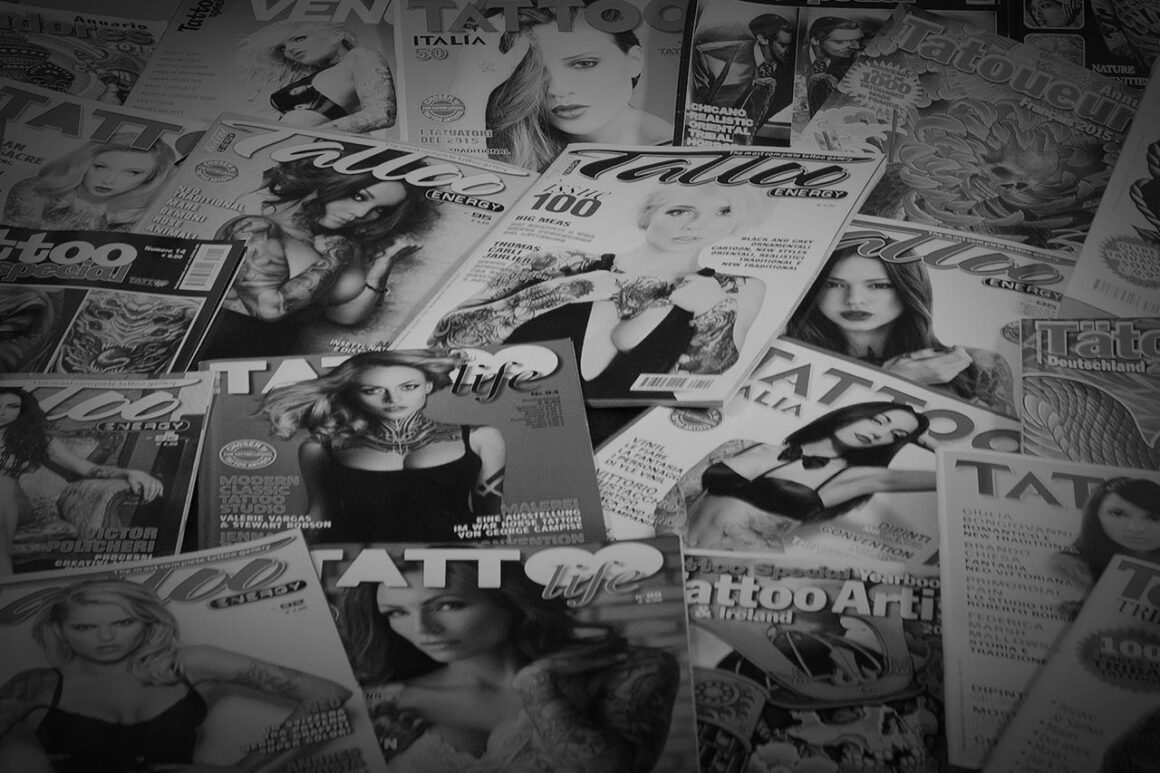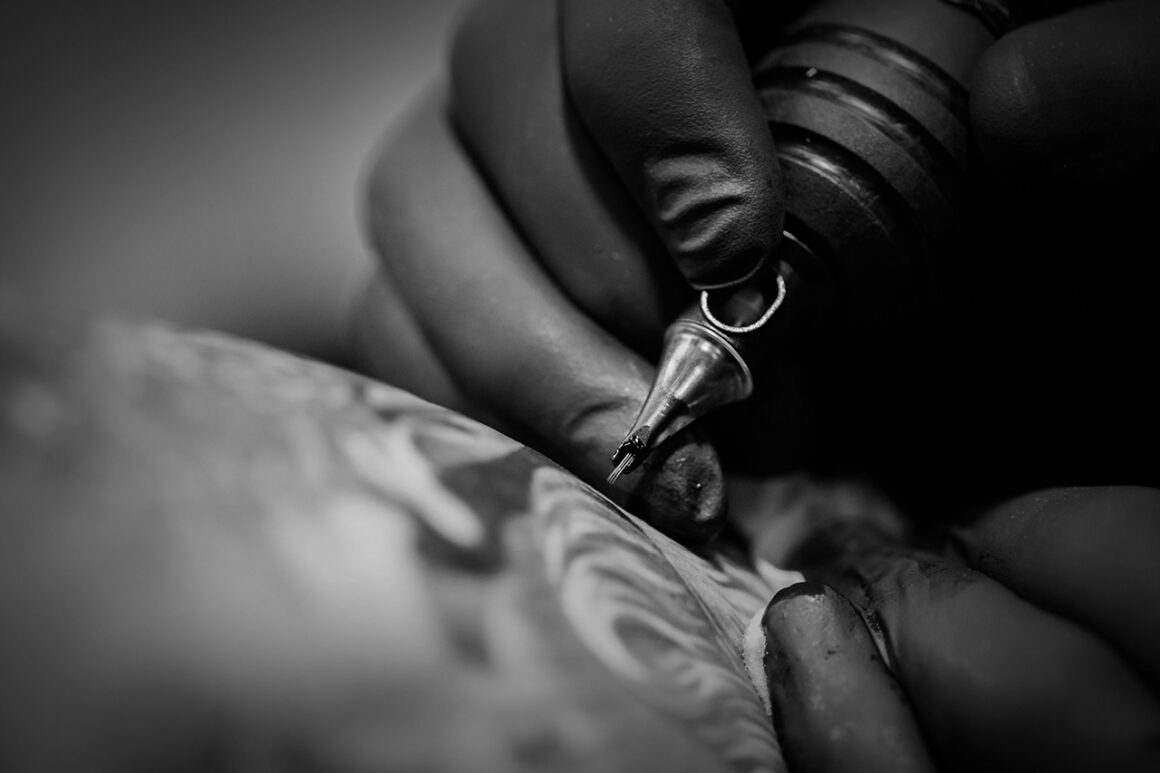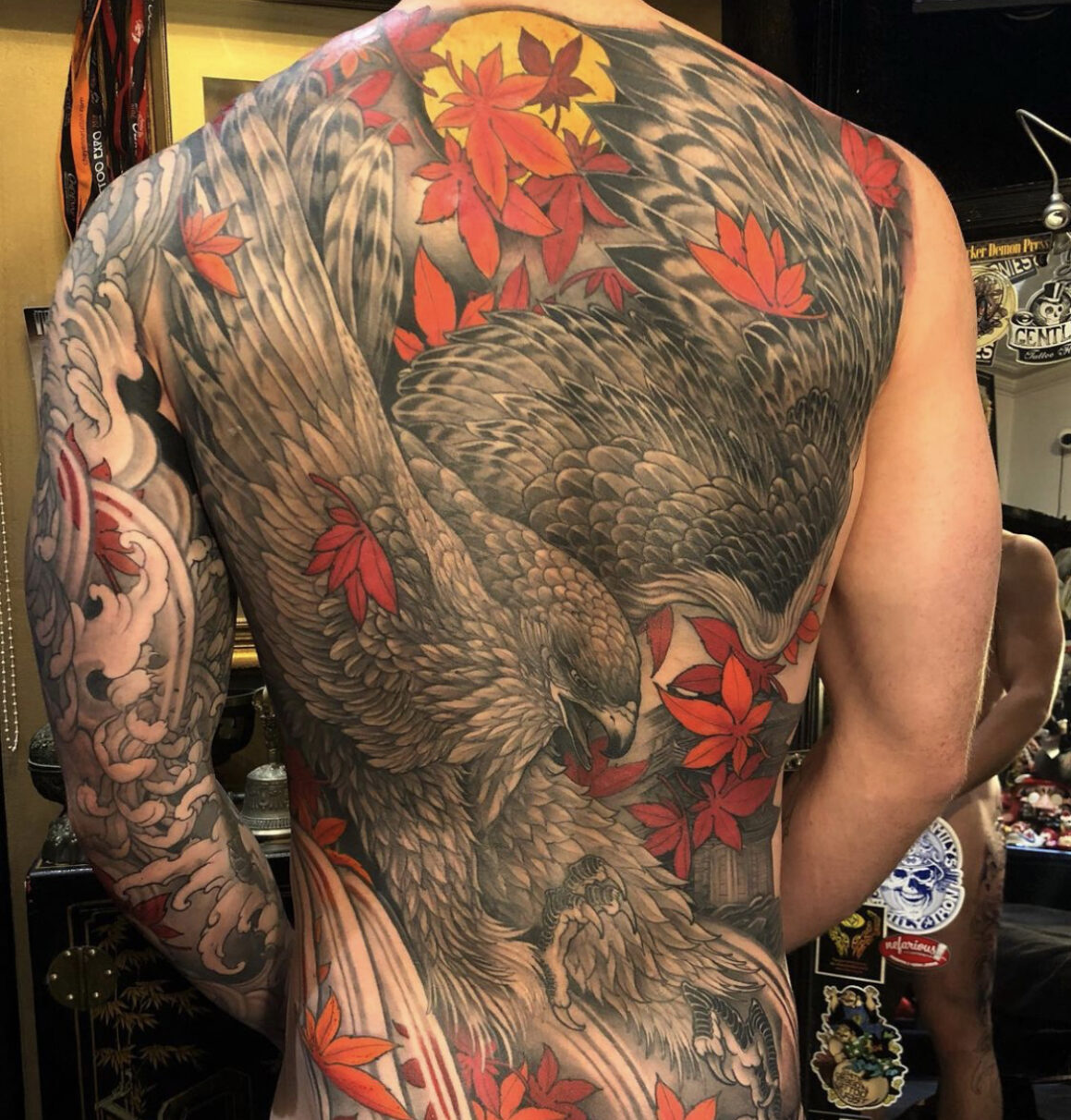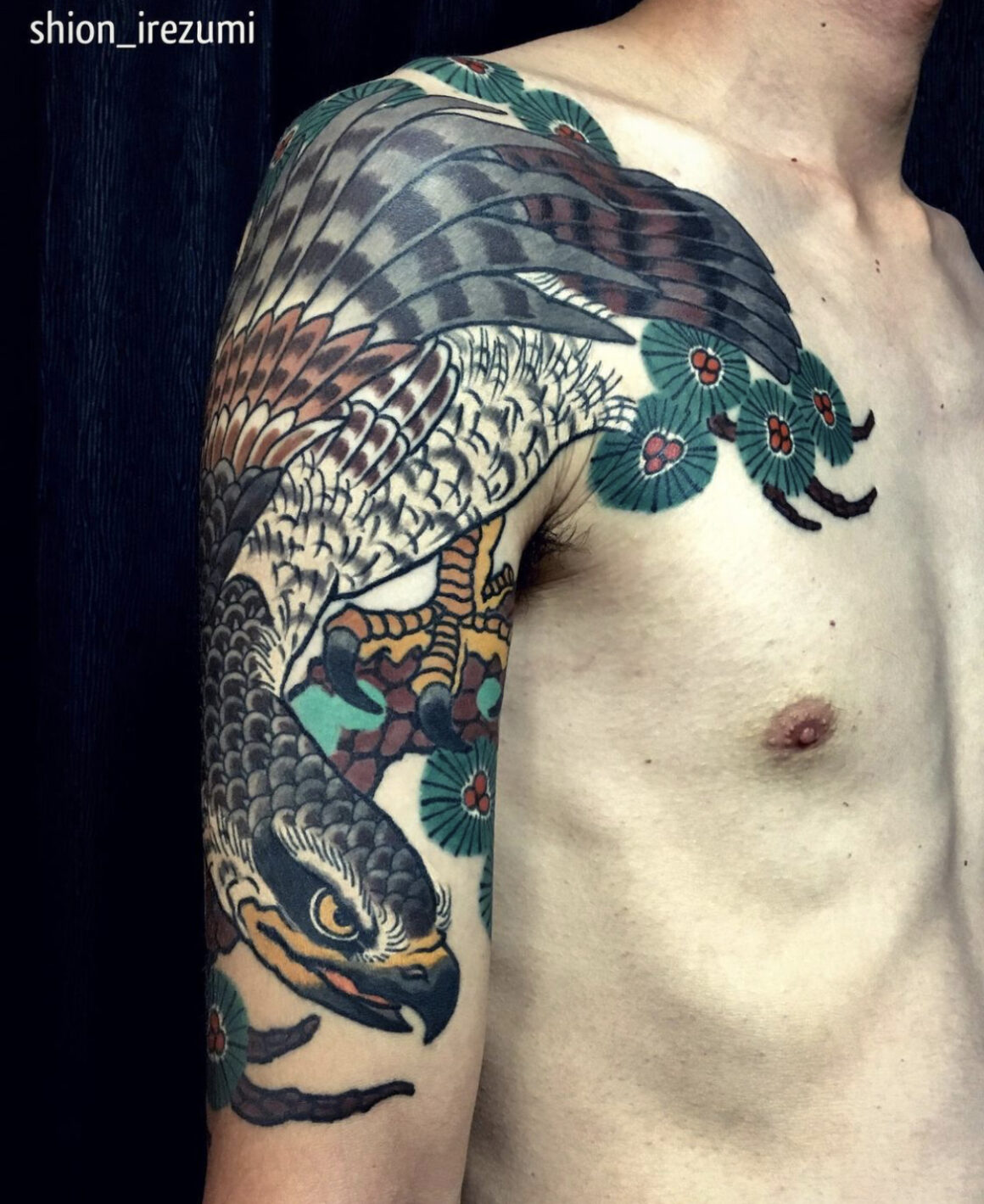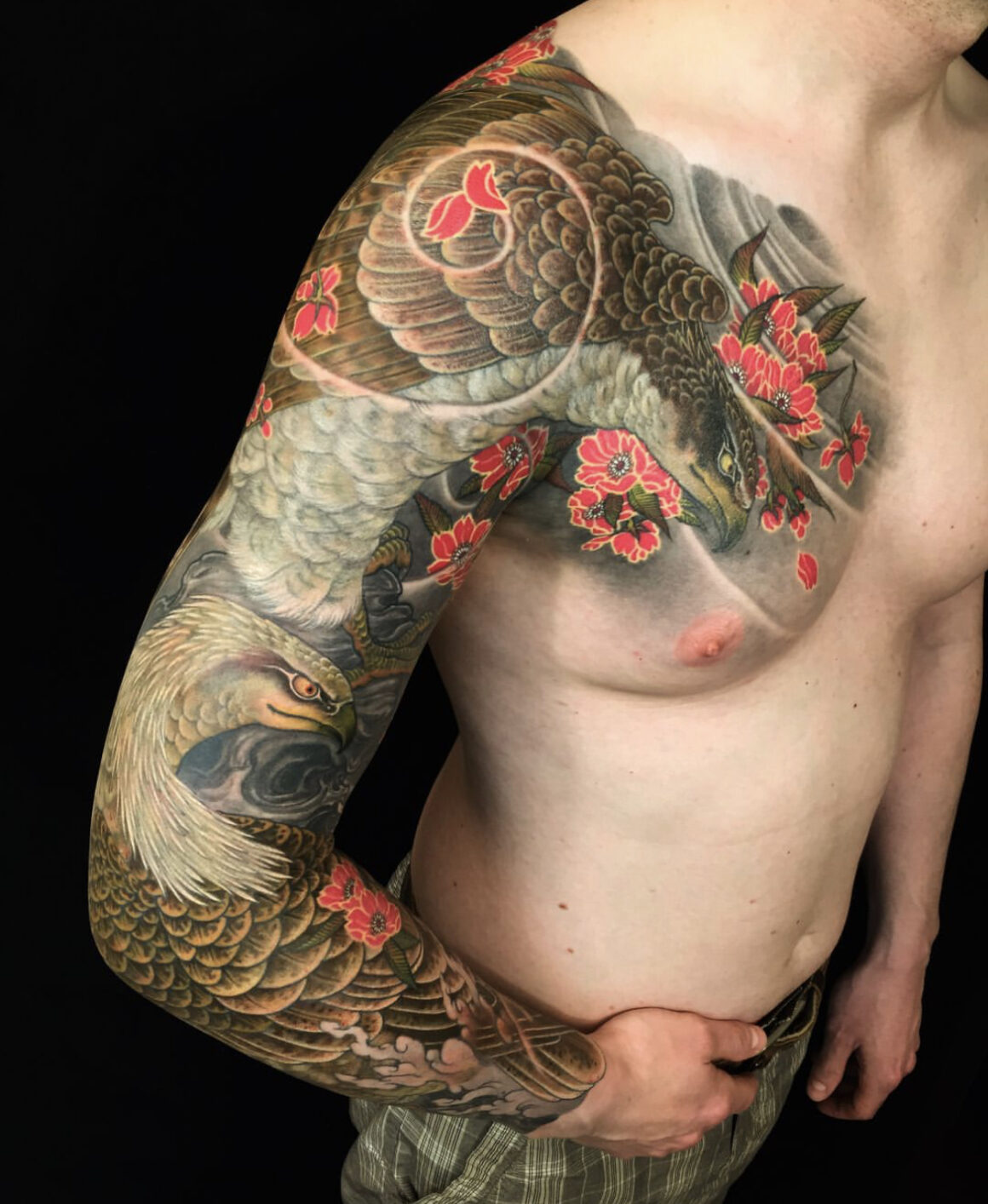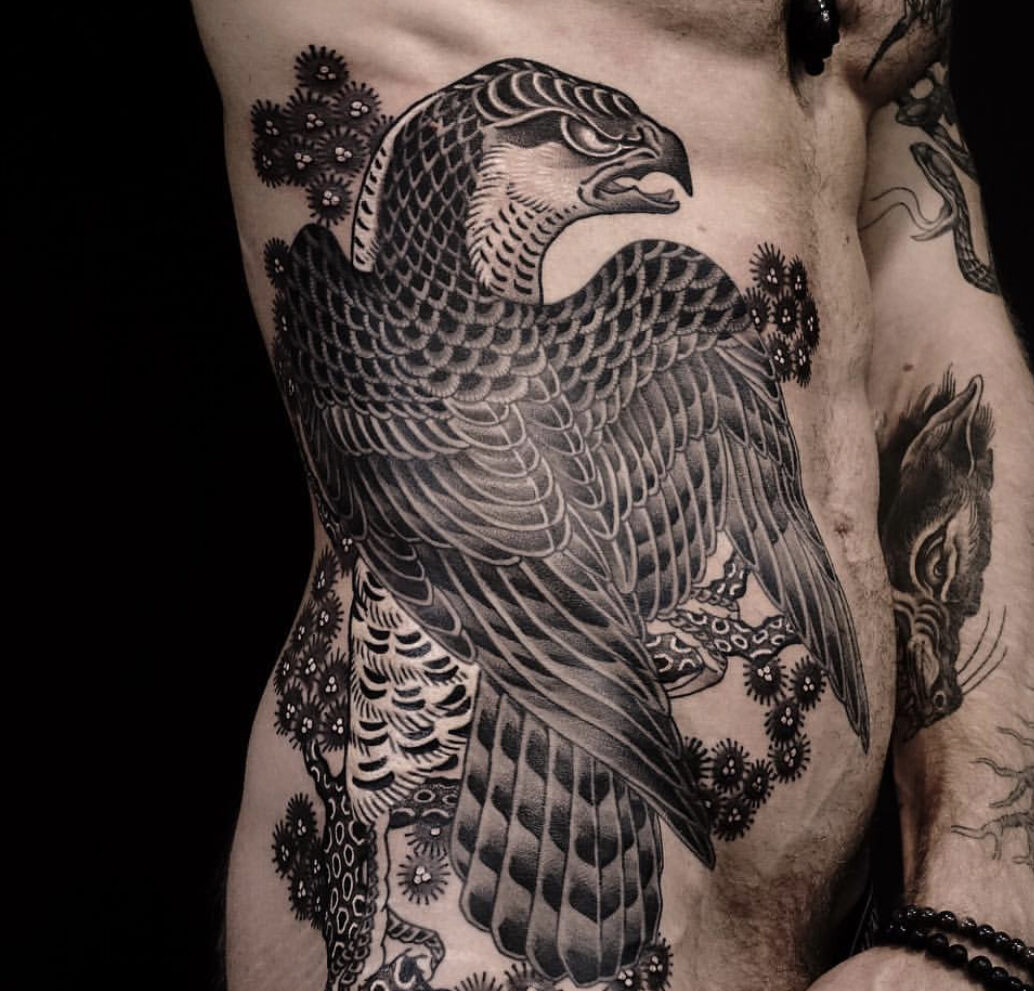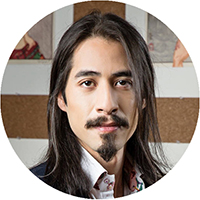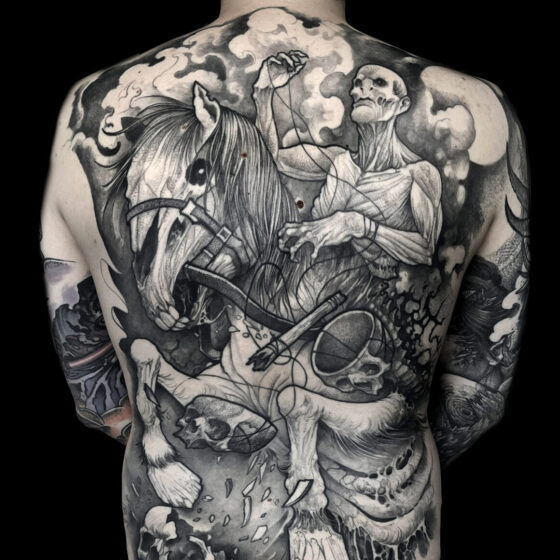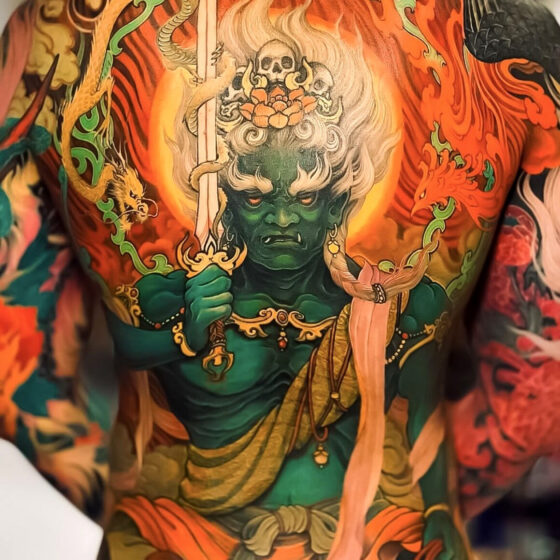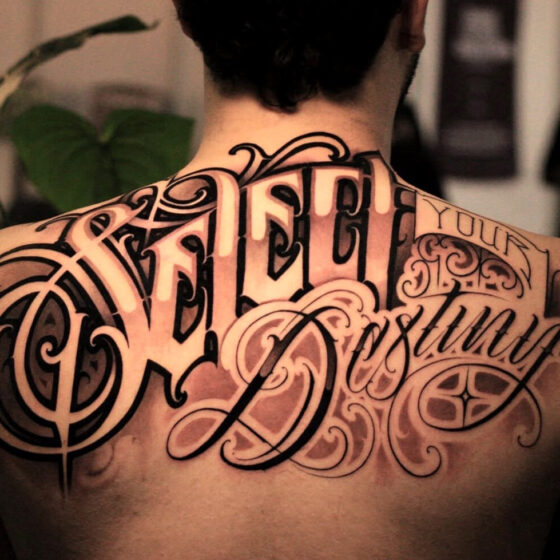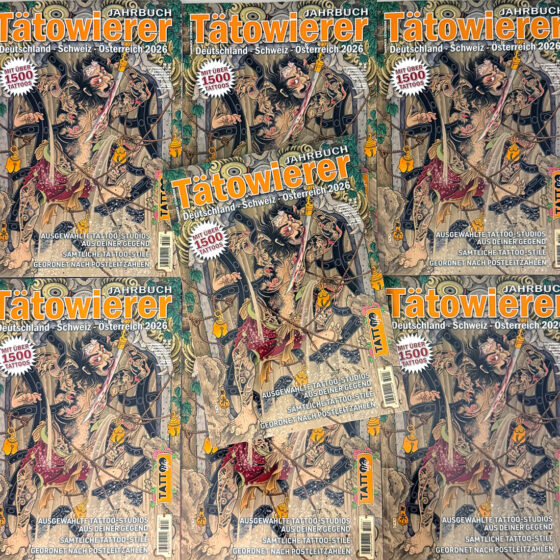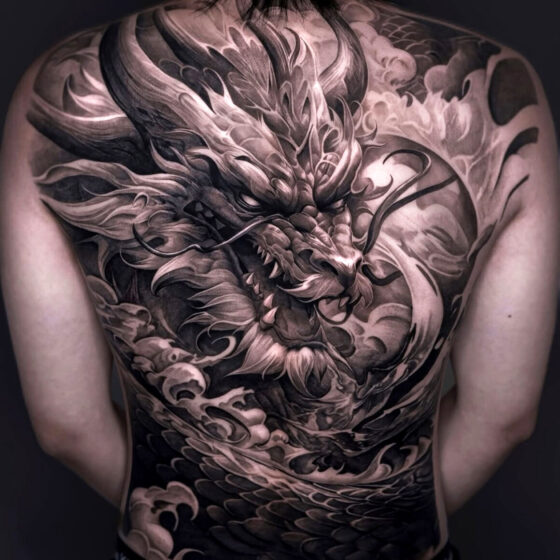Like many birds of prey, the Eagle is one that often features within Japanese art and tattoos. They were not just common visual imagery, but also considered a choice pet by aristocrats and emperors.
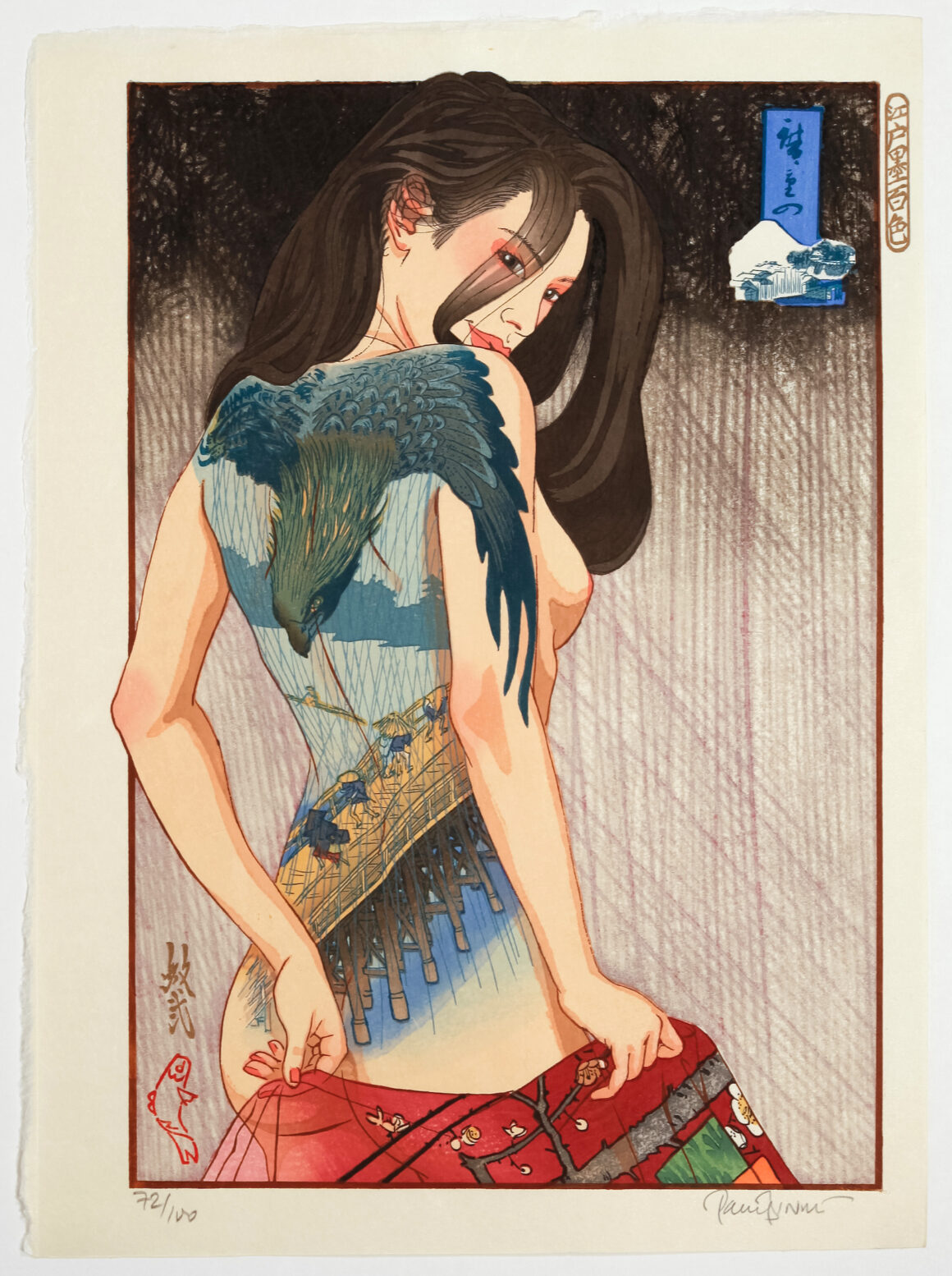
One of the most famous images of the eagle appears in Hiroshige’s well known series “One Hundred Views of Edo” (1856-1859). The print depicts an eagle as the focal point, soaring high above the open scenery below. This imagined perspective draws the viewer into becoming a free spirit with the eagle, creating an escapist, fantastical image. Directly contrasting Western art’s realist landscape images, typical Japanese art style will refrain from depicting what is truly seen, but a viewpoint which can only be imagined.
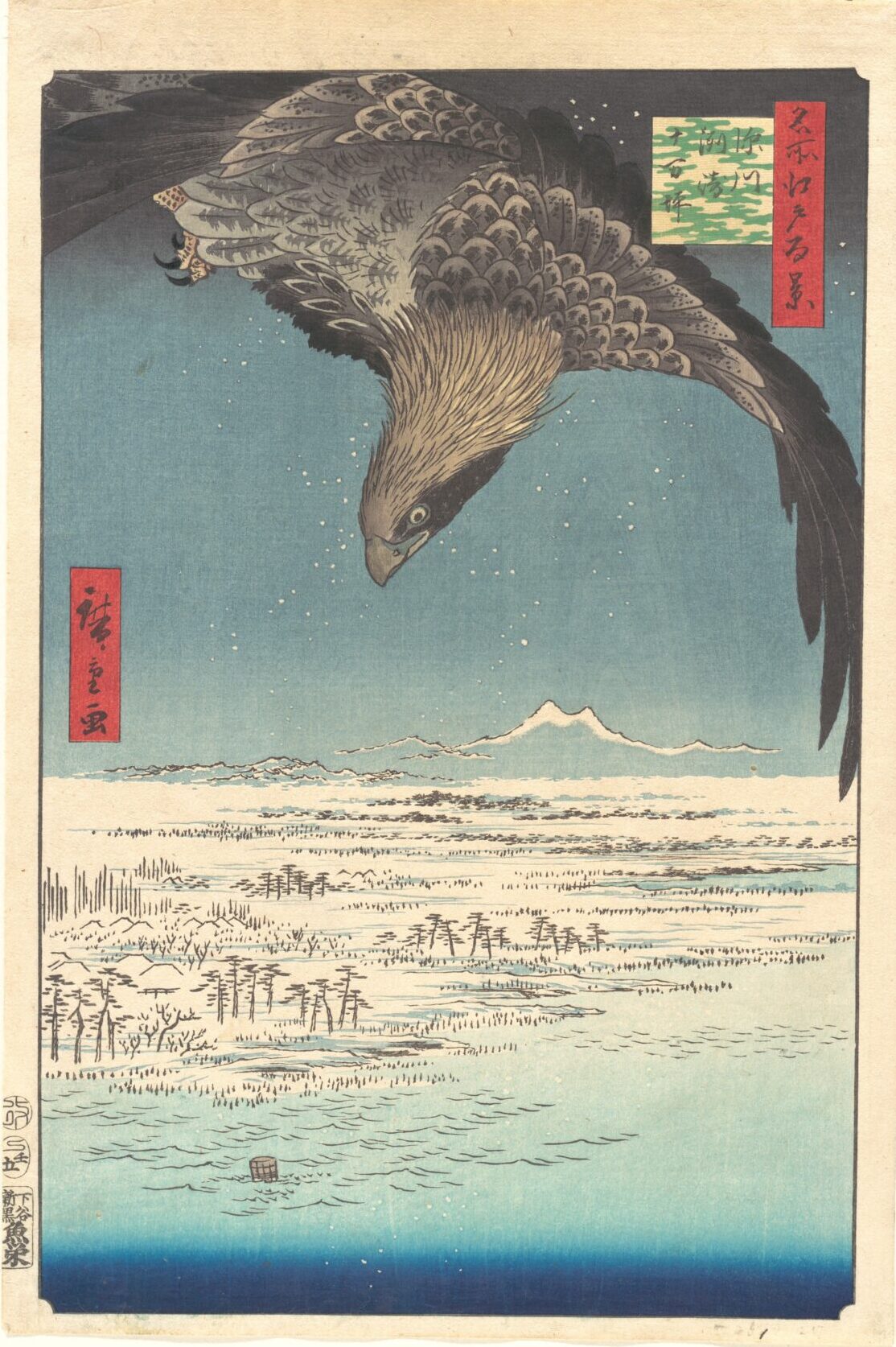
In the same spirit, traditional Japanese tattooists can ink imaginary worlds onto the body, whereby whoever sees these tattoos are transported into unreal worlds, unwittingly becoming a participant in the fantasy. This is one of many factors that make Japanese art and tattoo unique within its own right.
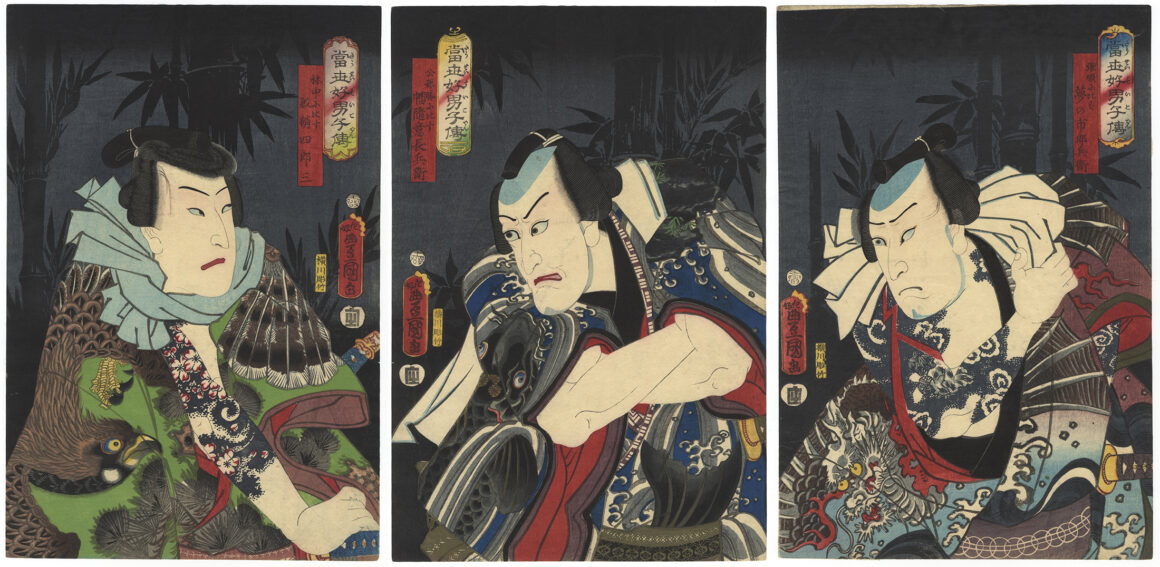
This methodology has also found its way into contemporary tattooing globally today. As a genre of art, it’s closest equivalent could be thought of as surrealism. Tattooists often take familiar or mundane objects and add twists or features not possible within reality as we know it. Artworks are not an attempt to change the fabric of reality, even if it wanted to. They remind us that we may not have the freedom to fly, but something greater; freedom of imagination.
